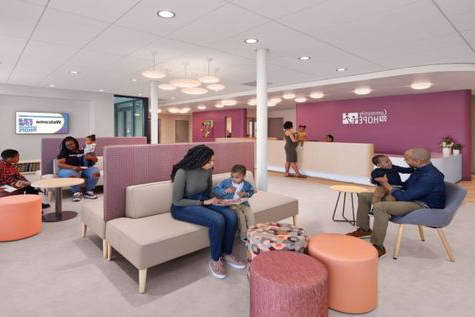Views: 0 Author: Site Editor Publish Time: 2024-04-29 Origin: Site








In healthcare, the waiting room experience plays a critical role in patient satisfaction and overall perceptions of quality care. As the healthcare landscape evolves, so must the approach to waiting room design and management. This comprehensive guide examines the evolving healthcare waiting room experience and explores innovative strategies and solutions to enhance patient satisfaction, optimize workflow efficiency, and ultimately improve healthcare outcomes.
Understanding the Significance of the Waiting Experience:
The waiting room serves as the initial point of contact for patients, setting the tone for their entire healthcare journey. Research indicates that the waiting experience significantly influences patient perceptions of care quality, with comfortable and well-designed waiting areas correlating positively with patient satisfaction levels. Moreover, efficient wait times are crucial for patient retention and loyalty, as prolonged waits can lead to dissatisfaction and even patient attrition.
Key Challenges in the Traditional Waiting Room Model:
Traditional waiting rooms often suffer from several shortcomings that undermine the patient experience and operational efficiency. These include:
1. Long wait times: Excessive wait times contribute to patient frustration and dissatisfaction.
2. Lack of privacy: Open waiting areas may compromise patient confidentiality and comfort.
3. Limited engagement: Patients often feel disconnected and disengaged while waiting, leading to negative perceptions of care quality.
4. Inefficient workflow: Poorly designed waiting areas can impede staff productivity and exacerbate bottlenecks in patient flow.

Evolving Trends in Waiting Room Design and Management:
To address these challenges and adapt to changing patient expectations, healthcare providers are embracing innovative approaches to waiting room design and management. Key trends include:
1. Patient-Centric Design: Modern waiting rooms prioritize patient comfort and convenience, incorporating elements such as comfortable seating, ample natural light, and access to amenities like refreshments and charging stations.
2. Technology Integration: Digital solutions, such as self-check-in kiosks and mobile appointment reminders, streamline administrative processes and empower patients to take an active role in their care journey.
3. Flexible Spaces: Modular furniture and adaptable layouts allow waiting areas to accommodate varying patient volumes and preferences, optimizing space utilization and promoting a sense of openness.
4. Personalized Experiences: Healthcare providers leverage patient data and analytics to tailor the waiting experience to individual preferences, offering personalized amenities and services to enhance satisfaction.
5. Wellness Initiatives: Waiting rooms increasingly incorporate elements of biophilic design and wellness amenities, such as greenery, artwork, and calming sensory experiences, to promote relaxation and reduce stress.
Best Practices for Enhancing the Waiting Experience:
Implementing an effective waiting room strategy requires a holistic approach that considers both physical design elements and operational workflows. Key best practices include:
1. Conducting Patient Feedback Surveys: Regular solicitation of patient feedback enables healthcare providers to identify areas for improvement and prioritize initiatives that enhance the waiting experience.
2. Staff Training and Engagement: Equipping staff with customer service training and fostering a culture of empathy and responsiveness can significantly impact patient perceptions of care quality.
3. Utilizing Data Analytics: Leveraging data analytics tools allows healthcare providers to monitor wait times, patient flow patterns, and other key metrics, enabling continuous optimization of waiting room operations.
4. Collaborating with Design Professionals: Engaging architects and interior designers with expertise in healthcare environments can help create waiting spaces that balance aesthetic appeal with functional efficiency and patient comfort.
5. Embracing Continuous Improvement: The evolution of the waiting experience is an ongoing process, necessitating a commitment to innovation and adaptation in response to shifting patient needs and industry trends.
Conclusion:
As the healthcare landscape continues to evolve, the waiting experience remains a critical touchpoint for patient satisfaction and loyalty. By embracing innovative design principles, leveraging technology solutions, and prioritizing patient-centric care, healthcare providers can revolutionize the waiting room experience, fostering positive perceptions of care quality and driving improved outcomes for patients and providers alike.